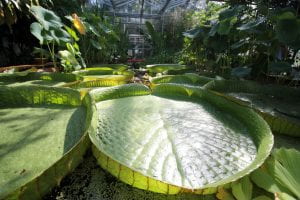By Andy Winfield

In summer a breeze will work its way through the boughs of a tree and the resulting sound is one of the constants in our lives, a white noise of leaves dancing on their stems. Right now, in autumn the leaves are at our feet, or swirling around corners, collecting at the foot of a tree, or at the base of a wall. Leaves stimulate all of our senses; we calm down merely by touching a leaf due to our innate evolutionary programming, and the sight of them emerging in Spring is enough to quicken our heartbeat. When we give leaves a bit of thought, it’s a wonder every tree and shrub doesn’t have a group of people staring up at them in awe.
All plants grow in the same way, they need light, air, water, and food. For many millions of years plants have been converting carbon dioxide and light into chemical energy through photosynthesis, and it wouldn’t be an understatement to say that this chemical process is the foundation for all life on earth. Leaves perform this role in most plants, producing food and ejecting the waste product of oxygen through tiny openings called stomata. Half of the world’s oxygen bubbles up from the sea courtesy of photosynthesising plankton, plants, algae, and bacteria; the other half is produced by land plants and their leaves.

Land plants vary enormously, from huge trees of Californian valleys to small stony African succulents, every plant is completely different while simultaneously being exactly the same. While animals can escape weather and danger, plants must deal with everything right where they are, and so have evolved in extraordinary ways. Needing to photosynthesise in every environment means that certain changes are necessary for leaves to perform, so here’s a quickfire series of adaptations…
In the dense tropical rainforests light is filtered through a canopy meaning that plants need to utilize what light there is. On the forest floor where light is at its lowest, and the most useful light wavelengths have been snaffled by the many leaves above, some leaves (such as Begonia pavonina) are structured in super thin layers; this refracts wavelengths of green light for use in food production leaving the surface glowing an iridescent blue. Further up the rainforest strata, intense rainfall means that leaves need to shed water, funnelling it down the leaf and through a tiny spout called a drip tip. In other environments there is too much light, plants have adapted to protect themselves with tiny white hairs reflecting light away. Cacti and succulents have adapted their leaves to become sharp spines, protecting themselves from thirsty foragers and leaving food production to the green stems. At altitude, pine trees have  rolled up, thin, needle like leaves that stay on the tree all year; the waxy coating stops them drying out as well as eliminating damage from snow and ice. In water, leaves lie flat to maximise light, and some, like Nelumbo nucifera, repel water with a bumpy, waxy surface. Grass leaves grow at the base of the plant to cope with frequent grazing. Antarctic hairgrass survives the rocky frozen wastelands of the southern most parts of the globe, its tough leaves hummocking from rocky outcrops. Some plants have adapted leaves to catch prey like Venus flytrap, others are laced with poison, such as oleander, or possess stinging attributes, such as nettles.
rolled up, thin, needle like leaves that stay on the tree all year; the waxy coating stops them drying out as well as eliminating damage from snow and ice. In water, leaves lie flat to maximise light, and some, like Nelumbo nucifera, repel water with a bumpy, waxy surface. Grass leaves grow at the base of the plant to cope with frequent grazing. Antarctic hairgrass survives the rocky frozen wastelands of the southern most parts of the globe, its tough leaves hummocking from rocky outcrops. Some plants have adapted leaves to catch prey like Venus flytrap, others are laced with poison, such as oleander, or possess stinging attributes, such as nettles.
This is just a snapshot of the diversity of leaves, but one thing all leaves do, is to give us the air that we breath. Knowing this, there should be great reverence for the trees above us, the shrubs alongside us, and the plants around our feet. Looking at all the discarded leaves in November is awe inspiring; a mature acer is said to have around 100,000 leaves, while an oak could have upwards of 700,000. Every one of them is as important to us as anything can ever be, so as you kick up a pile of fallen leaves, issue a quiet thank you using the oxygen that they gave you.


Nature has no time as known to us, as human beings.
To see their beauty in everything
A sunny day brings joy to us all
To wild life and nature at its best.
Awaiting tit bits large and small,
Their beauty given to us with simplicity
To all.
One must remember the beauty of nature Bernadine